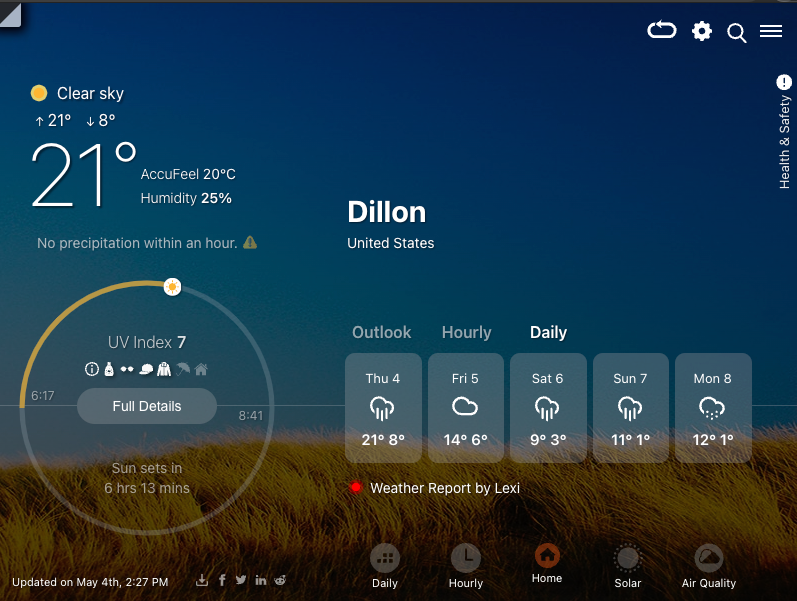4 min read . March 28, 2023
As summer temperatures continue to rise, city dwellers may find themselves feeling the heat more intensely than their rural counterparts. Urban heat island effect is a phenomenon that concerns urban planners and residents. It’s becoming increasingly important. In a nutshell, UHIs are areas where temperatures are significantly higher than in surrounding rural regions.
The U.S. Environmental Protection Agency (EPA) reports that cities with over one million residents can experience temperature differences of up to 22°F compared to nearby rural areas. This increase in temperature not only affects our comfort levels but also has serious implications for public health, energy consumption, and air quality.
One of the main reasons behind this temperature disparity is the prevalence of dark surfaces in urban environments. Dark surfaces absorb more sunlight and retain heat longer than lighter-colored surfaces, leading to increased surface temperatures. Additionally, buildings and other structures block wind flow, which would otherwise help disperse heat.
Another contributing factor is the lack of vegetation in cities. Trees and plants provide natural cooling through shade and evapotranspiration – a process by which water evaporates from leaves, cooling the surrounding air. Without this natural cooling mechanism, cities become trapped in a cycle of increasing temperatures.
Concrete Jungle: Why Urban Heat Islands
The materials used in constructing urban environments play a significant role in creating Urban Heat Island. Concrete, asphalt, and other building materials have high thermal mass properties – meaning they absorb and store heat during the day and release it at night. This results in elevated nighttime temperatures that can make it difficult for city residents to cool down after a sweltering day.
Moreover, densely populated cities often have limited green spaces due to land constraints or prioritization of development projects over parks or gardens. As mentioned earlier, the absence of vegetation exacerbates the UHI effect by reducing shade and evapotranspiration.
Air pollution is another factor that contributes to the UHI effect. Pollutants such as particulate matter, nitrogen oxides, and volatile organic compounds can trap heat in the atmosphere, further raising temperatures in urban areas. Additionally, these pollutants can react with sunlight to form ground-level ozone – a harmful air pollutant that can cause respiratory issues and other health problems.
Lastly, waste heat generated by human activities also plays a role in increasing urban temperatures. Cars, air conditioners, and industrial processes all produce heat as a byproduct of their operation. In densely populated cities, this waste heat accumulates and contributes to the overall warming of the environment.
Green Solutions: Cooling Down Our Cities
Fortunately, there are several strategies that city planners and residents can implement to mitigate the effects of Urban Heat Island. One such solution is increasing green spaces within cities through initiatives like rooftop gardens or community parks. These green spaces not only provide shade but also help reduce air pollution levels by absorbing pollutants.
Another effective strategy is using cool pavements – surfaces designed to reflect more sunlight and absorb less heat than traditional pavement materials. According to the EPA, cool pavements can reduce surface temperatures by up to 50°F compared to conventional asphalt surfaces.
Incorporating green roofs into building designs is another way to combat UHIs. Green roofs consist of layers of vegetation installed on top of buildings, providing insulation and reducing energy consumption for cooling purposes. A study conducted in Toronto found that implementing green roofs could reduce citywide temperatures by up to 1°C (1.8°F).
Finally, promoting energy efficiency measures can help reduce waste heat generated by human activities. Encouraging public transportation use over private vehicles or implementing energy-efficient building codes are just a few examples of how cities can work towards reducing their overall heat output.
Community Action: Tackling Urban Heat Islands Together
Addressing the issue of UHIs requires a collaborative effort from city planners, policymakers, and residents. Communities can develop and implement strategies together to reduce UHIs’ impact. These strategies can also improve overall quality of life.
For example, community members can advocate for more green spaces in their neighborhoods or participate in tree-planting initiatives. Local governments can provide incentives for businesses to incorporate green roofs or cool pavements into their building designs.
Educating the public about the importance of energy efficiency is another crucial step in combating Urban Heat Island. Raising awareness about energy-efficient appliances or sustainable transportation can reduce waste heat generation. Communities can collectively work towards it.
In conclusion, urban heat islands are a growing concern for cities worldwide. By understanding factors and implementing mitigation strategies, we can create cooler, healthier environments. It benefits all city dwellers.
AI-Powered technology for staying informed and cool
Stay informed about rising temperatures in your city with UV Weather, a browser extension featured by Google that uses AI to deliver the latest weather updates and forecasts. Take action against Urban Heat Island by increasing green spaces, using cool pavements, promoting energy efficiency, and advocating for sustainable transportation. Join the community action and download UV Weather from the Chrome Web Store today.

UV Weather powered by Chat GPT 4

